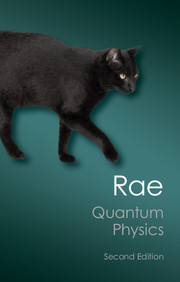Book contents
- Frontmatter
- Dedication
- Contents
- Preface to the first edition
- Preface to the second edition
- 1 Quantum physics
- 2 Which way are the photons pointing?
- 3 What can be hidden in a pair of photons?
- 4 Wonderful Copenhagen?
- 5 Is it all in the mind?
- 6 Many worlds
- 7 Is it a matter of size?
- 8 Backwards and forwards
- 9 Only one way forward?
- 10 Can we be consistent?
- 11 Illusion or reality?
- Further reading
- Index
2 - Which way are the photons pointing?
Published online by Cambridge University Press: 05 February 2014
- Frontmatter
- Dedication
- Contents
- Preface to the first edition
- Preface to the second edition
- 1 Quantum physics
- 2 Which way are the photons pointing?
- 3 What can be hidden in a pair of photons?
- 4 Wonderful Copenhagen?
- 5 Is it all in the mind?
- 6 Many worlds
- 7 Is it a matter of size?
- 8 Backwards and forwards
- 9 Only one way forward?
- 10 Can we be consistent?
- 11 Illusion or reality?
- Further reading
- Index
Summary
The previous chapter surveyed part of the rich variety of physical phenomena that can be understood using the ideas of quantum physics. Now that we are beginning the task of looking more deeply into the subject we shall find it useful to concentrate on examples that are comparatively simple to understand but which still illustrate the fundamental principles and highlight the basic conceptual problems. Some years ago most writers discussing such topics would probably have turned to the example of a ‘particle’ passing through a two-slit apparatus (as in Figure 1.2), whose wave properties are revealed in the interference pattern. Much of the discussion would have been in terms of wave–particle duality and the problems involved in position and momentum measurements, as in the discussion of the uncertainty principle in the last chapter. However, there are essentially an infinite number of places where the particle can be and an infinite number of possible values of its momentum, and this complicates the discussion considerably. We can illustrate all the points of principle we want to discuss by considering situations where a measurement has only a small number of possible outcomes. One such quantity relating to the physics of light beams and photons is known as polarisation. In the next section we discuss it in the context of the classical wave theory of light, and the rest of the chapter extends the concept to situations where the photon nature of light is important.
- Type
- Chapter
- Information
- Quantum PhysicsIllusion or Reality?, pp. 17 - 30Publisher: Cambridge University PressPrint publication year: 2012



